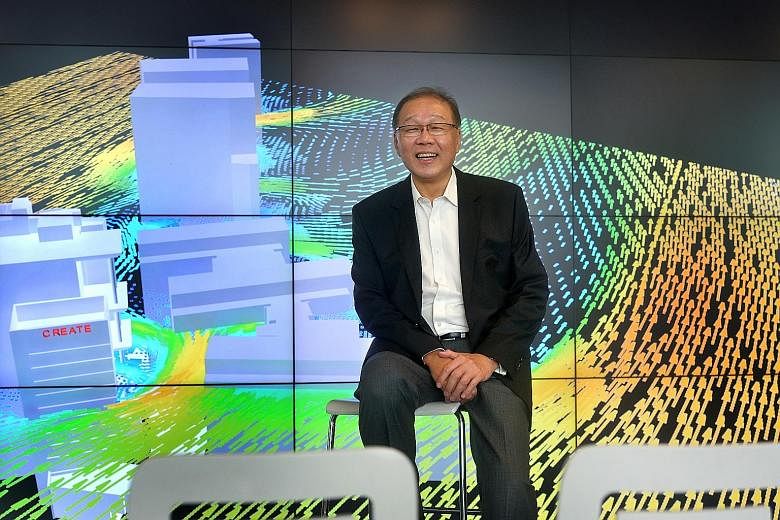In the next five years, more public money for research will flow to projects that make a difference to the lives of Singaporeans, on top of those that rev up the economy, said the man charting the nation's research direction.
National Research Foundation chief Low Teck Seng has $19 billion in hand. And of the roughly $10 billion that goes to public research institutions, researchers will have to compete for 40 per cent from now to 2020, an increase from about one-fifth between 2010 and last year.
Professor Low, aware that he is in charge of the biggest amount ever available for Singapore researchers, told The Straits Times: "In managing public funds, we must make sure we fund the right things, to be more focused and sharper.
"There is no place for mediocrity in this world today."
The new emphasis is key to ensuring Singapore attracts and retains the best people, and produces the best results, he added.
"There's no such thing as perpetual funding," he said, noting that a scientist may hitherto have produced excellent work, but someone even better could be out there. "We have a level of maturity that requires us to be cleverer in what we're doing," he added.
This means going beyond economically important areas, like advanced manufacturing, to fields that ensure the country's "societal, national and economic needs" are met - by helping the growing silver population age well or making Singapore more self-sufficient in food, for instance.
Citing water, Prof Low noted it was a national need served by research on desalination and membrane technology for water purification. No matter what, "we would fund it, because we need it to survive".
Also critical is the ability to respond effectively to emerging infectious diseases. When the severe acute respiratory syndrome (Sars) broke out in 2003, Singapore was caught off guard.
"Today, I think we would be able to respond in a much speedier and more knowledgeable fashion", as Singapore now has "a very established knowledge ecosystem" built up through years of research, he said. "With knowledge, there's no fear."
Acknowledging that the past funding regime could be improved in certain areas, he said care would be taken not to mire scientists in too much red tape when they applied for grants.
Still, "when you're big and growing, sometimes appropriate management structures become a necessity although we must ensure it's not too onerous".
But he added: "The more you can deliver, the more latitude you will be given in doing pet projects."
There is also $2.5 billion of "white space" funding set aside for unanticipated needs and opportunities.
One example is cyber security, which arose during the last funding cycle.
Talent is a critical ingredient in the research equation, said Prof Low, noting that top research hubs are characterised by their ability "to cream off the best in the world".
The National Research Foundation has more than 60 fellows, selected in a gruelling year-long process to get the most outstanding young scientists who can be leaders in local research institutions.
The Government has also introduced the Returning Singaporean Scientists Scheme to attract top-notch science brains abroad to return home.
It is the latest move in the public funding of science and technology, which began in earnest in 1991 with the first five-year plan, the National Technology Plan.
Twenty-five years and $40 billion later, Singapore has matured from using research and development to support industry needs, to developing world-class universities and institutes, and carrying out research that ranges from water purification to stomach cancer treatment.
As Prof Low put it: "Science and technology will be central to our strategies for building Singapore for the future."


